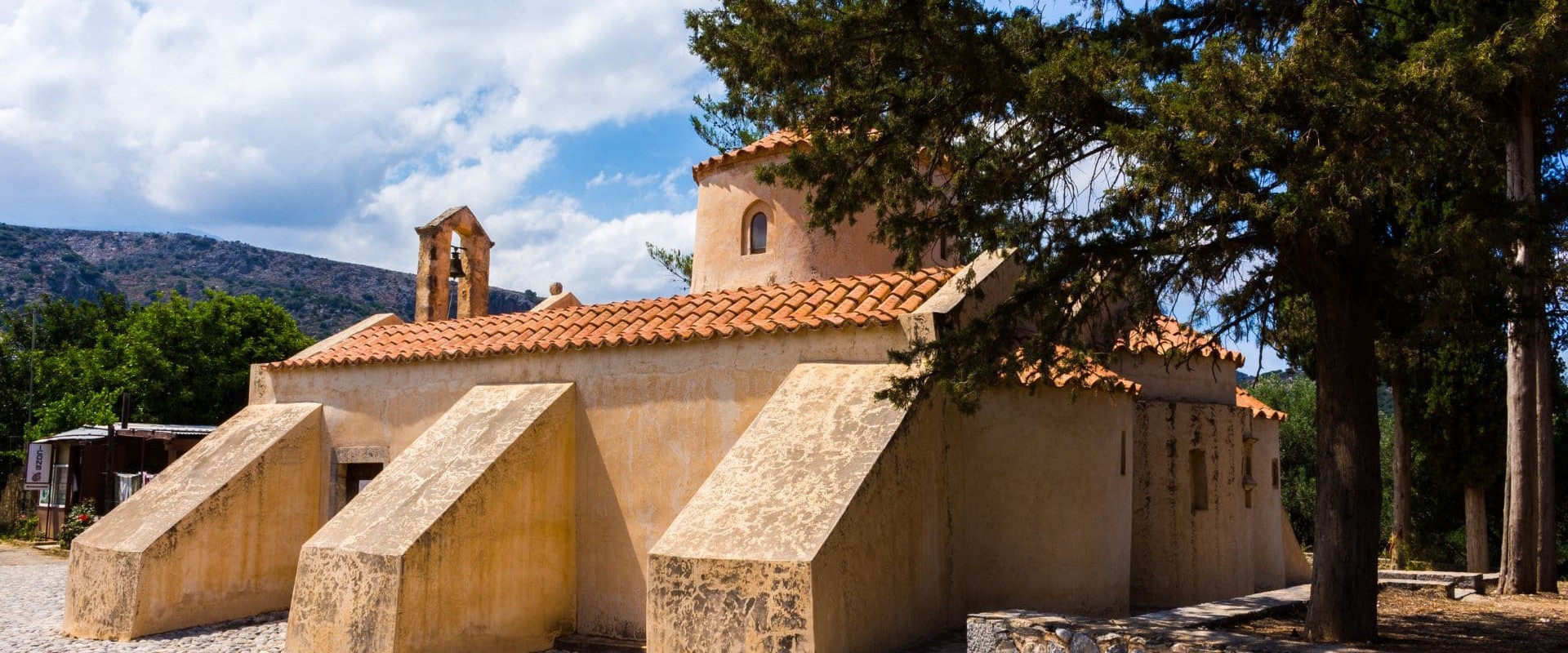
Exploring the Mystique of Panagia Kera: A Journey Through History and Faith
Nestled 50 kilometers southeast of Heraklion, just before reaching the quaint village of Kera, lies the historic Panagia Kera monastery, also known as Kardiotissa.
With its roots intertwined with tales of wartime refuge and religious significance, this monastery stands as a testament to Crete's rich cultural tapestry.
During the tumult of World War II, Panagia Kera served as a sanctuary for the Greek Liberation Army, a chapter in its storied past that adds to its allure. Dedicated to the Nativity of the Theotokos, or the Nativity of Mary, this monastery holds a special place in the hearts of Cretans. Today, it operates as a nunnery, providing a home to six devoted nuns.
Central to the monastery's legacy is the miraculous icon of the Virgin Mary, known as Vrefokratoussa, or Infant Holder, for the tender depiction of Mary cradling the infant Jesus close to her heart. This iconic image has earned the monastery its nickname, Kardiotissa, derived from the Greek word for heart, "kardia."
Another revered icon housed within the monastery is the "Kyria Kardiotissa," dating back to 1795. Legend has it that this sacred image, portraying the Virgin Mary seated with the infant Jesus, miraculously returned to the monastery three times after being stolen by the Turks and taken to Constantinople. To safeguard it, the icon was eventually secured to a marble column with a thick chain, a column that still stands within the monastery grounds today.
Panagia Kera's architectural marvels reflect its enduring history. The oldest wall paintings, dating back to the 14th century, adorn the sanctuary, depicting scenes from the life of Christ and the Virgin Mary. Through centuries of turmoil and renovation, the monastery has evolved, with its construction spanning the Byzantine period to the present day.
Visitors to Panagia Kera are greeted by the original single-nave church, now serving as a sanctuary, adorned with intricate iconostasis. The monastery's architecture, characterized by barrel-vaulted ceilings and successive naves, offers a glimpse into its evolving design over the centuries.
For pilgrims and history enthusiasts alike, Panagia Kera offers a sacred journey through time. Whether marveling at its ancient frescoes or reflecting in its serene surroundings, the monastery stands as a beacon of faith and resilience. As we celebrate its legacy on the Feast of the Nativity of Mary each September 8th, let us honor the enduring spirit of Panagia Kera and the devotion it inspires in all who visit.